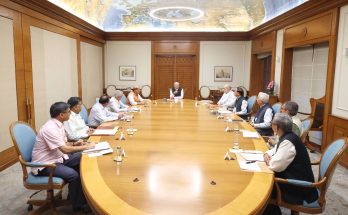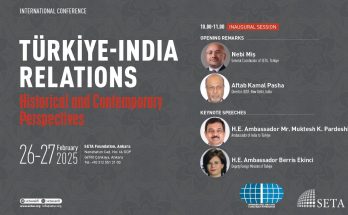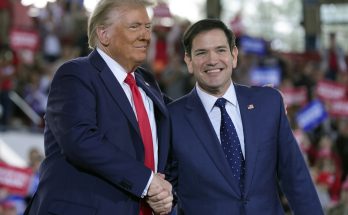 Prime Minister Narendra Modi’s recently-concluded visit to Sri Lanka did not generate any big bang commitments, but laid out an ambitious roadmap for providing more economic substance and strategic heft to this crucial bilateral relationship.
Prime Minister Narendra Modi’s recently-concluded visit to Sri Lanka did not generate any big bang commitments, but laid out an ambitious roadmap for providing more economic substance and strategic heft to this crucial bilateral relationship.
This was the fourth high-level interaction between the two countries since the formation of the new government in Sri Lanka and the first visit to Colombo by an Indian prime minister in almost three decades. After President Sirisena’s surprise win in the January elections, the Indo-Sri Lankan ties have registered a marked upswing.
Mr. Sirisena chose India as the destination for his first foreign tour, and Mr Modi was his first state guest. Mr Modi’s visit was rife with symbolism as well as sunstance, and emphasised on shared cultural relations and economic and security concerns to pave way for a long-term partnership.
Substantive Agenda
Like his Japan visit last year, Mr Modi’s Sri Lanka tour, too, had a multi-city itinerary with a strong cultural component, aimed at projecting India’s goodwill and soft power. In his address to the Sri Lankan Parliament, Mr Modi emphasised the need for a robust strategic bilateral relationship for the development of both countries as well as the region. He held consultations with a broad range of political leaders to show India’s non-partisan approach, holding talks with former presidents, Mr Rajapaksa (under whom China made significant inroads into Sri Lankan economy) and Ms Chandrika Kumaratunga, the current leader of opposition, Muslim Congress leaders, Chief Minister of the Northern Province, Mr. C.V. Vigneswaran, and the Tamil National Alliance leaders. He paid tribute to the IPKF memorial at Colombo and addressed the business meeting at Ceylon Chamber of Commerce (where he stressed on the need for regional economic integration and work towards a Comprehensive Economic Partnership Agreement). He also visited the Maha Bodhi Society and offered prayers at the Sri Bodh Gaya tree in Anuradhapura (on the outskirts of Colombo), where he was accompanied by Mr Sirisena.
Promoting Reconciliation
At Jaffna, in the Northern Province, his stops showcased India’s commitment to humanitarian reconstruction efforts. The inauguration of the Talaimannar Pier Railway Station (completing the reconstruction of the entire Northern Province Railway Line), handing over homes at the Ilavalai (part of the flagship housing project where India is aiding in construction of 50,000 houses under owner-driven approach, 27,000 of which are completed), and laying the foundation stone of the Jaffna Cultural Centre – these initiatives that underlined the focus on promoting robust people-to-people contacts. Mr Modi also offered prayers at the revered Shiva shrine of Naguleswaram temple, which was destroyed during the civil war, but has since undergone reconstruction.
India also pledged $318 million Line of Credit for railway upgradation (New Delhi’s development assistance is already about $1.6 billion), a currency swap agreement of US $1.5 billion to help stabilise Sri Lankan rupee and to develop Trincomalee as a regional petroleum hub with cooperation of Lanka IOC (Indian Oil Corp’s subsidiary in Sri Lanka) and Ceylon Petroleum Corporation. Both countries also signed four modest pacts regarding visa exemption for official passport holders, youth exchanges, customs agreement (to address trade concerns and reduce non-tariff barriers) and the construction of the Rabindranath Tagore auditorium at Ruhuna University with India’s aid. Also, tourist visa on arrival facilities are to be made available from April for Sri Lankan visitors, to boost tourism and connectivity.
Power devolution, fisherman issue
Alluding to the minority question in Sri Lankan politics, in his parliamentary address, Mr Modi said that “diversity can be a source of strength for nations” when the aspirations of all sections of society are accommodated. He said that he was a strong believer of cooperative federalism, and cited India’s successful example in devolving power to states, said that “early and full implementation of the 13th Amendment and going beyond it” would aid in the process of reconciliation. However, he also stressed that unity of Sri Lanka was paramount, and that modalities for political solution to the problem should come from within the country. He also urged the Tamil leaders to reassess their stand and cooperate with the new government in finding a political solution. “The bilateral talks between fisherman’s associations should be started and should then be taken forward by the governments. The issue would take time to resolve and should be done in a humanitarian manner,” he added.
Economic engagement
India is the largest trade partner for Sri Lanka, ahead of China. The trade, skewed in India’s favour, remains, however, much more favourable than the terms of trade with China. Sri Lanka performs well on the Ease of Doing Business Index, ranking 52nd (India ranks 142). In his parliamentary address, Mr Modi said that Sri Lanka had the potential to be India’s strongest economic partner in the region, and that the regional vision was one where “trade, investments, technology, ideas and people flow easily across borders”.
The Big Picture
The Sri Lankan visit ought to be seen within the larger rubric of the Indian Ocean Region diplomacy: China’s overtures to gain strategic in roads in India’s neighbourhood with economic investments, India’s new government pushing for dynamism in the economy, and India’s aspirations in a multipolar world. There has been a subtle shift in envisioning the region as well. While China pushes the Maritime Silk Road project, India’s ‘Mausam’ initiative, seeks to project soft power, and revive cultural linkages among the Indian Ocean littoral, showing India’s desire to move to a new regional identity (beyond SAARC), and ensuring a leadership role within it.
Indian Ocean Diplomacy
India’s regional diplomacy has long been restrained by tumultuous relations with countries along the land borders. India’s traditional neighbourhood in South Asia has not been able to overcome historical animosities and remained embroiled in internal crises. With China making strategic inroads (coming together under the ambitious ‘one belt, one road’ project), and a resentment about India in sections of the population in South Asian countries, the equation has become more complex.
Sri Lanka remains the only neighbour to have battled terrorism successfully and is in the process of rejuvenating and expanding its economy. India has, therefore, decided to look away from its land borders to explore possibilities in the maritime domain by invoking the shared sense of culture along the Indian Ocean littoral.
Mr. Modi’s Sri Lanka visit was the last stop on a multi-nation tour in which he visited Seychelles and Mauritius (where he was the chief guest for the National Day). At all his three stops, Mr. Modi stressed on the need to develop the Indian Ocean Region, boost maritime security cooperation and harness economic potential of the ‘blue economy’.
All in all, the prime ministerial visit has culminated in a long-term vision for accelerating relations across all sectors. Small but significant steps have been taken to promote increased connectivity and cooperation between the two countries and the larger region. But it may still take a while till some meaningful progress is made.
Author Profile
- India Writes Network (www.indiawrites.org) is an emerging think tank and a media-publishing company focused on international affairs & the India Story. Centre for Global India Insights is the research arm of India Writes Network. To subscribe to India and the World, write to editor@indiawrites.org. A venture of TGII Media Private Limited, a leading media, publishing and consultancy company, IWN has carved a niche for balanced and exhaustive reporting and analysis of international affairs. Eminent personalities, politicians, diplomats, authors, strategy gurus and news-makers have contributed to India Writes Network, as also “India and the World,” a magazine focused on global affairs.
Latest entries
 India and the WorldJune 26, 2025Operation Sindoor: India Sheds Restraint, Rediscovers Utility of Force
India and the WorldJune 26, 2025Operation Sindoor: India Sheds Restraint, Rediscovers Utility of Force India and the WorldJune 23, 2025BRICS summit in Rio to focus on Global South, local currency trade
India and the WorldJune 23, 2025BRICS summit in Rio to focus on Global South, local currency trade Africa InsightsJune 11, 2025New Opportunities in India-Japan Cooperation in Africa
Africa InsightsJune 11, 2025New Opportunities in India-Japan Cooperation in Africa India and the WorldMay 23, 2025Post-Operation Sindoor, India reminds Turkey, China of concerns and sensitivities
India and the WorldMay 23, 2025Post-Operation Sindoor, India reminds Turkey, China of concerns and sensitivities







